DevOps, short for Development and Operations, represents a paradigm shift in software development practices, emphasizing collaboration, automation, and continuous delivery. In the modern-day software landscape, where agility and efficiency are paramount, DevOps has emerged as a cornerstone methodology for streamlining the software development lifecycle.
At its essence, DevOps aims to break down silos between development, operations, and other stakeholders, fostering a culture of collaboration and shared responsibility to accelerate delivery, improve quality, and enhance overall efficiency.
Before delving into the key components of DevOps, it's essential to outline the scope of this blog and provide a roadmap for what readers can expect to learn. In this comprehensive exploration of DevOps practices, we will dissect the core principles, methodologies, and tools that drive modern software development and deployment.
From understanding the foundational principles of DevOps to exploring the intricacies of continuous integration/continuous deployment (CI/CD) pipelines, infrastructure as code (IaC), and automation tools, each section will offer valuable insights and practical guidance for implementing DevOps practices effectively.
By the end of this blog, readers will have a deep understanding of DevOps and its role in accelerating delivery, improving quality, and fostering collaboration within organizations.
Key Components of DevOps
DevOps encompasses a range of principles, practices, and tools that work synergistically to drive continuous improvement and innovation in software development and deployment. These components include:
Principles: DevOps principles underpin the cultural shift towards collaboration, agility, and automation. They emphasize concepts such as continuous integration, continuous delivery, infrastructure as code, and feedback loops. By adhering to these principles, organizations can align their development and operations teams, streamline processes, and achieve faster time-to-market.
Continuous Integration/Continuous Deployment (CI/CD) Pipelines: CI/CD pipelines automate the process of integrating code changes, running tests, and deploying applications to production environments. Continuous integration ensures that changes made by developers are regularly merged into a shared codebase, while continuous deployment automates the release process, enabling rapid and reliable delivery of software updates.
Infrastructure as Code (IaC): IaC enables the provisioning and management of infrastructure through code rather than manual processes. By defining infrastructure configurations in code, organizations can automate deployment, enforce consistency, and improve scalability. IaC tools such as Terraform and AWS CloudFormation allow teams to treat infrastructure as programmable resources, enabling greater agility and efficiency.
Automation Tools: Automation lies at the heart of DevOps, enabling organizations to streamline repetitive tasks, reduce manual errors, and accelerate delivery. Automation tools encompass a wide range of technologies, including configuration management tools like Ansible and Puppet, containerization platforms like Docker and Kubernetes, and orchestration tools like Jenkins and CircleCI.
Importance of DevOps
The adoption of DevOps practices is crucial for organizations seeking to remain competitive in the modern-day market that runs on the principle of change being the only constant. By embracing DevOps, organizations can achieve several key benefits:
Accelerated Delivery: DevOps promotes a culture of continuous integration, continuous delivery, and automation, enabling organizations to deliver new features and updates to customers more rapidly and reliably. By automating manual processes and optimizing workflows, DevOps reduces time-to-market and enhances competitiveness.
Improved Quality: DevOps practices such as automated testing, continuous monitoring, and feedback loops help organizations identify and address issues earlier in the development process, resulting in higher-quality software. By detecting defects and performance issues sooner, DevOps enables teams to deliver more stable, resilient, and user-friendly applications.
Enhanced Collaboration: DevOps encourages collaboration and communication between development, operations, and other cross-functional teams, fostering a shared sense of ownership and accountability. By breaking down silos and promoting transparency, DevOps enables teams to work together more effectively, aligning efforts towards common goals and driving innovation.
Increased Efficiency: By automating manual tasks, optimizing workflows, and leveraging infrastructure as code, DevOps enables organizations to achieve greater efficiency and productivity. DevOps practices reduce overhead, eliminate waste, and improve resource utilization, allowing teams to focus on value-added activities and strategic initiatives.
In summary, DevOps represents a fundamental shift in how software is developed, deployed, and maintained. By embracing DevOps principles, practices, and tools, organizations can achieve faster delivery, higher quality, and greater efficiency, ultimately driving business success in today's digital economy.
Understanding DevOps Principles
DevOps principles serve as the foundation for implementing DevOps practices effectively, fostering collaboration, agility, and automation throughout the software development lifecycle. These principles encapsulate the core values and philosophies that guide DevOps adoption and execution within organizations.
DevOps principles encompass a set of core values and practices aimed at breaking down organizational silos, fostering collaboration, and accelerating delivery. These principles emphasize cultural aspects such as shared responsibility, continuous improvement, and customer-centricity, as well as technical practices such as automation, infrastructure as code, and continuous integration/continuous deployment (CI/CD).
At its core, DevOps is a cultural movement that emphasizes collaboration, communication, and empathy between development and operations teams. It encourages a shift from traditional, siloed approaches to a more integrated, cross-functional model where teams work collaboratively towards shared goals. DevOps culture promotes transparency, trust, and accountability, fostering a sense of ownership and empowerment among team members.
DevOps principles revolve around concepts such as automation, continuous integration, continuous delivery, infrastructure as code, and feedback loops. Automation streamlines repetitive tasks, reduces manual errors, and improves efficiency, while continuous integration ensures that code changes are integrated and tested frequently.
Continuous delivery automates the deployment process, enabling organizations to release software updates rapidly and reliably. Infrastructure as code treats infrastructure configurations as code, allowing for automated provisioning, configuration, and management of infrastructure resources. Feedback loops facilitate continuous learning and improvement by gathering insights from users, stakeholders, and monitoring systems.
Many organizations have embraced DevOps principles to achieve significant improvements in delivery speed, quality, and collaboration. Companies such as Amazon, Netflix, and Etsy have transformed their software development and deployment processes using DevOps practices, enabling them to innovate rapidly, respond to market changes quickly, and deliver value to customers more efficiently. By adopting DevOps principles, these organizations have achieved higher levels of agility, reliability, and scalability, positioning themselves as leaders in their respective industries.
Continuous Integration and Continuous Deployment (CI/CD) Pipelines
Continuous Integration (CI) and Continuous Deployment (CD) pipelines play a crucial role in automating the software delivery process, enabling organizations to streamline development, testing, and deployment workflows. These pipelines automate the build, test, and deployment stages of software development, ensuring that code changes are integrated, validated, and deployed rapidly and reliably.
What are CI/CD Pipelines?
CI/CD pipelines are automated workflows that enable developers to integrate code changes, run tests, and deploy applications continuously. CI focuses on integrating code changes into a shared repository frequently, typically multiple times a day. CD extends CI by automating the deployment process, allowing organizations to release code changes to production environments automatically and safely.
Benefits of CI/CD Pipelines
CI/CD pipelines offer several benefits to organizations, including faster release cycles, reduced manual errors, and increased deployment frequency. By automating the build, test, and deployment stages of software development, CI/CD pipelines enable teams to deliver new features and updates to customers more rapidly and reliably.
Continuous integration ensures that code changes are validated and integrated quickly, while continuous deployment automates the release process, reducing the time and effort required to deploy software updates.
Components of CI/CD Pipelines
CI/CD pipelines consist of several components, including version control, automated testing, artifact management, and deployment automation. Version control systems such as Git enable developers to collaborate on code changes and track revisions over time. Automated testing frameworks such as JUnit, Selenium, and Jest allow teams to validate code changes automatically, ensuring that new features and updates meet quality standards.
Artifact management tools such as Nexus and JFrog Artifactory facilitate the storage and distribution of build artifacts, ensuring consistency and traceability across environments. Deployment automation tools such as Jenkins, CircleCI, and GitLab CI/CD automate the deployment process, enabling organizations to release code changes to production environments quickly and reliably.
Popular CI/CD Tools and Platforms
Several CI/CD tools and platforms are available to organizations looking to implement CI/CD pipelines effectively. Jenkins, one of the most widely used CI/CD tools, offers a flexible and extensible platform for automating software delivery pipelines. GitLab CI/CD provides a seamless integration with GitLab's version control system, enabling organizations to manage code, CI/CD pipelines, and deployments in a single platform.
CircleCI offers a cloud-based CI/CD platform that supports continuous integration, continuous delivery, and continuous deployment workflows. These tools, along with others like Travis CI, GitHub Actions, and Azure DevOps, empower organizations to design and implement robust CI/CD pipelines tailored to their specific needs and requirements.
Best Practices for CI/CD Pipelines
Designing and implementing effective CI/CD pipelines requires careful planning and consideration of best practices.
Some key best practices for CI/CD pipelines include keeping build times short, automating tests at all levels (unit, integration, and end-to-end), versioning artifacts consistently, and practicing continuous feedback and improvement. Additionally, organizations should prioritize security and compliance by integrating security testing and code analysis into their CI/CD pipelines.
By following these best practices, organizations can maximize the efficiency, reliability, and effectiveness of their CI/CD pipelines, driving continuous improvement and innovation in software delivery.
Infrastructure as Code (IaC)
Infrastructure as Code (IaC) revolutionizes the way organizations manage and provision infrastructure, enabling automation and scalability while reducing manual errors and improving consistency.
In this section of our blog, we will explore the concept of IaC, its advantages, principles, and practical implementation through hands-on examples.
What is IaC?
Infrastructure as Code (IaC) represents a fundamental shift in the way infrastructure is managed and provisioned within modern software development and deployment workflows. At its core, IaC involves the use of declarative or imperative code to define and automate the provisioning, configuration, and management of infrastructure resources such as virtual machines, networks, storage, and services.
This approach replaces traditional manual processes with automated, repeatable, and version-controlled practices, enabling organizations to treat infrastructure as programmable and scalable resources.
Importance of IaC
The adoption of IaC is crucial for organizations aiming to achieve agility, efficiency, and reliability in their infrastructure management practices. By transitioning from manual, error-prone configurations to automated and programmable infrastructure, organizations can realize several key benefits:
Automation and Efficiency: IaC allows for the automation of repetitive and time-consuming tasks associated with infrastructure provisioning and management. By codifying infrastructure configurations, organizations can automate deployment processes, reduce manual errors, and streamline workflows, resulting in faster and more efficient delivery of infrastructure resources.
Consistency and Standardization: With IaC, infrastructure configurations are defined in code, ensuring consistency and standardization across environments. By enforcing uniformity in configurations, organizations can minimize configuration drift, reduce the risk of inconsistencies between development, testing, and production environments, and enhance overall reliability and stability.
Scalability and Flexibility: IaC enables organizations to scale infrastructure resources up or down dynamically in response to changing demand or workload requirements. By treating infrastructure as code, organizations can easily replicate and modify configurations, provision resources on demand, and adapt to evolving business needs, resulting in greater agility and flexibility.
Version Control and Auditability: IaC leverages version control systems to manage infrastructure code, enabling organizations to track changes, roll back to previous states, and audit configuration history. By maintaining a comprehensive record of infrastructure changes, organizations can ensure accountability, compliance, and traceability, enhancing security and governance practices.
Advantages of IaC
The adoption of IaC offers numerous advantages over traditional manual infrastructure management approaches:
Infrastructure Consistency: By defining infrastructure configurations in code, IaC ensures consistency across environments, reducing the risk of configuration errors and discrepancies.
Repeatability and Reliability: IaC enables the rapid and reliable provisioning of infrastructure resources through automated, repeatable processes, minimizing the likelihood of human error and ensuring consistent deployment outcomes.
Scalability and Elasticity: With IaC, organizations can scale infrastructure resources up or down dynamically to meet changing demand or workload requirements, allowing for greater scalability and elasticity in resource allocation.
Efficiency and Cost Savings: By automating infrastructure provisioning and management, IaC reduces manual overhead, accelerates deployment cycles, and optimizes resource utilization, resulting in increased operational efficiency and cost savings.
IaC Principles
Several principles guide the implementation of IaC, including declarative vs. imperative approaches, idempotent infrastructure, and infrastructure drift prevention. Declarative approaches define the desired state of infrastructure without specifying the steps to achieve it, while imperative approaches define the specific actions needed to configure infrastructure.
Idempotent infrastructure ensures that applying the same configuration multiple times produces the same result, minimizing the risk of unintended changes. Infrastructure drift prevention involves detecting and correcting discrepancies between the desired state of infrastructure defined in code and its actual state in production.
Practical Implementation of IaC
To demonstrate the practical implementation of IaC, we will provide hands-on examples using popular IaC tools and frameworks such as Terraform and AWS CloudFormation. Terraform is an open-source infrastructure as a code tool that enables users to define and provision infrastructure resources using a declarative configuration language.
AWS CloudFormation is a managed service provided by Amazon Web Services (AWS) for provisioning and managing AWS infrastructure resources using JSON or YAML templates. Through step-by-step examples, we will showcase how to use Terraform and AWS CloudFormation to provision and configure infrastructure resources such as virtual machines, networks, and storage buckets.
By mastering the concepts and practices of Infrastructure as Code (IaC), organizations can streamline infrastructure provisioning and management, automate deployment processes, and achieve greater efficiency and scalability in their software development and deployment workflows.
Automated Testing and Quality Assurance
Automated testing plays a crucial role in DevOps practices by enabling organizations to validate software changes quickly and efficiently throughout the development lifecycle. By automating various types of tests, including unit tests, integration tests, and end-to-end tests, teams can identify defects early, ensure code quality, and accelerate the delivery of high-quality software products.
Role of Automated Testing in DevOps
Automated testing is an integral part of the DevOps toolchain, facilitating continuous integration, continuous delivery, and continuous deployment processes. By automating the execution of tests, organizations can achieve several key objectives:
Faster Feedback Cycles: Automated tests provide rapid feedback on the quality of code changes, enabling developers to detect and address defects early in the development process. This rapid feedback loop helps teams identify issues promptly, iterate quickly, and maintain a high pace of development.
Improved Code Quality: Automated tests help maintain code quality by validating functionality, performance, and reliability across different layers of the application. By ensuring that code changes meet specified requirements and standards, automated testing helps prevent regressions and maintain the overall integrity of the software.
Reduced Time-to-Market: By automating testing processes, organizations can accelerate the release of software updates and features, reducing time-to-market and gaining a competitive edge. Automated testing enables faster validation of changes, allowing teams to deliver value to customers more frequently and predictably.
Types of Automated Tests
Automated testing encompasses various types of tests, each serving a specific purpose in validating different aspects of software functionality:
Unit Tests: Unit tests focus on testing individual components or units of code in isolation, typically at the function or method level. Unit tests help verify the correctness of small, independent units of code and ensure that they behave as expected under different conditions.
Integration Tests: Integration tests validate the interactions and dependencies between different components or modules within the application. These tests verify that integrated components work together seamlessly and handle data exchanges, communication protocols, and interface interactions correctly.
End-to-end Tests: End-to-end tests simulate real-world user interactions with the application, validating its behavior from end to end. These tests cover the entire software stack, including user interfaces, backend services, and external dependencies, to ensure that the application functions correctly in production-like environments.
Benefits of Automated Testing
Automated testing offers several benefits for organizations adopting DevOps practices:
Increased Efficiency: Automated tests execute quickly and consistently, enabling teams to validate code changes rapidly and efficiently. This efficiency helps reduce manual effort, eliminate human error, and optimize testing processes, leading to faster delivery cycles and higher productivity.
Enhanced Code Quality: Automated tests help identify defects early in the development lifecycle, allowing teams to address issues promptly and maintain high code quality. By detecting regressions and anomalies, automated testing helps prevent defects from propagating to production environments, minimizing the impact on end users.
Cost Savings: Automated testing reduces the need for manual testing efforts, resulting in cost savings for organizations. By automating repetitive testing tasks, teams can allocate resources more effectively, optimize testing efforts, and achieve greater ROI on testing investments.
Popular Testing Frameworks and Tools
Several testing frameworks and tools are available to support automated testing across different types of tests:
JUnit: JUnit is a popular testing framework for Java applications, used for writing and executing unit tests. It provides annotations, assertions, and test runners to simplify the creation and execution of unit tests in Java projects.
Selenium: Selenium is a widely used testing framework for web applications, allowing developers to automate browser interactions and test web UI components. Selenium supports various programming languages and browsers, making it versatile and suitable for cross-browser testing.
Jest: Jest is a JavaScript testing framework developed by Facebook, designed for testing React applications. It offers features such as snapshot testing, mocking, and code coverage analysis, making it a comprehensive solution for testing React components and applications.
Postman: Postman is a popular API testing tool used for automating the testing of RESTful APIs. It provides a user-friendly interface for creating and executing API tests, managing test suites, and generating detailed test reports, making it an essential tool for API development and testing.
Best Practices for Automated Testing
To maximize the effectiveness of automated testing in CI/CD pipelines, organizations should follow best practices such as:
Test Early and Often: Integrate automated tests into the development process and run them frequently to detect issues early and ensure continuous feedback.
Prioritize Test Coverage: Focus on achieving comprehensive test coverage by prioritizing critical paths, edge cases, and high-risk areas of the application in automated test suites.
Maintain Test Stability: Write robust and maintainable tests that are resilient to changes in the application code, ensuring that tests remain stable and reliable over time.
Monitor Test Results: Monitor test execution results regularly to identify failures, investigate root causes, and address issues promptly to maintain the integrity of the testing process.
Optimize Test Performance: Optimize test execution times by parallelizing tests, minimizing dependencies, and using techniques such as test data management and test isolation to improve performance.
Automated testing is a critical component of DevOps practices, enabling organizations to achieve faster feedback cycles, improved code quality, and reduced time-to-market. By leveraging automated testing frameworks and tools, implementing best practices, and integrating testing into CI/CD pipelines, organizations can streamline their testing processes and deliver high-quality software products with greater efficiency and confidence.
Containerization and Orchestration
Containerization has revolutionized the way applications are packaged, deployed, and managed, offering a lightweight and efficient alternative to traditional virtualization technologies. In this section of the blog, we will explore the concepts of containerization and orchestration, discussing their role in modern software development and deployment practices.
What is Containerization?
Containerization is a virtualization technology that allows developers to package applications and their dependencies into isolated, lightweight units called containers. Unlike virtual machines, which require a separate operating system for each instance, containers share the host operating system's kernel, resulting in lower overhead and faster startup times. Containers encapsulate the application code, runtime, libraries, and other dependencies, ensuring consistency and reproducibility across different environments.
Advantages of Containerization
Containerization offers several advantages for software development and deployment:
Consistency: Containers provide a consistent environment for running applications, regardless of the underlying infrastructure. By packaging applications and dependencies together, containers eliminate compatibility issues and ensure that software behaves consistently across development, testing, and production environments.
Portability: Containers are portable and can run on any platform that supports containerization, making them ideal for hybrid and multi-cloud environments. Developers can build and test applications locally in containers and deploy them seamlessly to cloud environments without modification, streamlining the deployment process and increasing flexibility.
Resource Efficiency: Containers are lightweight and require fewer resources compared to virtual machines, making efficient use of computing resources and improving scalability. By sharing the host operating system's resources, containers minimize overhead and maximize resource utilization, allowing organizations to run more applications on the same infrastructure.
Containerization Platforms and Tools
Several containerization platforms and tools are available to facilitate the creation, management, and orchestration of containers:
Docker: Docker is a popular containerization platform that simplifies the process of building, deploying, and managing containers. It provides a comprehensive set of tools for creating container images, running containers, and managing containerized environments. Docker's ecosystem includes Docker Engine, Docker Compose, and Docker Swarm, offering a complete solution for containerization.
Kubernetes: Kubernetes is an open-source container orchestration platform developed by Google, designed to automate the deployment, scaling, and management of containerized applications. Kubernetes provides features such as service discovery, load balancing, and automatic scaling, making it suitable for deploying and managing complex containerized workloads in production environments.
Docker Swarm: Docker Swarm is Docker's native clustering and orchestration tool, allowing organizations to deploy and manage a cluster of Docker hosts as a single virtual system. Docker Swarm provides features such as service discovery, load balancing, and rolling updates, simplifying the management of containerized applications at scale.
Practical Examples of Containerization and Orchestration
Let's explore some practical examples of containerizing applications, orchestrating containers, and managing containerized environments using Docker and Kubernetes:
Containerizing Applications with Docker: To containerize an application with Docker, developers create a Dockerfile specifying the application's dependencies and configuration.
They then use the Docker build command to build a Docker image from the Dockerfile. Once the image is built, developers can run containers based on the image using the Docker run command, specifying any necessary runtime options and environment variables.
Orchestrating Containers with Kubernetes: In Kubernetes, developers define the desired state of their applications using YAML configuration files called Kubernetes manifests. These manifests specify the desired number of replicas, container images, networking, and storage requirements for each application component.
Kubernetes controllers such as Deployments, StatefulSets, and DaemonSets ensure that the actual state of the application matches the desired state specified in the manifests, orchestrating containers accordingly.
Managing Containerized Environments: Docker and Kubernetes provide powerful management capabilities for containerized environments, allowing operators to monitor, scale, and troubleshoot containerized applications effectively. Docker Swarm and Kubernetes offer built-in features for logging, monitoring, and health checks, enabling operators to monitor the performance and availability of containerized workloads in real time.
Containerization and orchestration technologies such as Docker and Kubernetes offer powerful tools for modernizing software development and deployment practices. By leveraging containerization platforms and tools, organizations can achieve greater consistency, portability, and resource efficiency, enabling them to build, deploy, and manage applications more effectively in today's dynamic IT landscape.
Monitoring and Logging
Monitoring and logging are critical components of DevOps practices, providing visibility into application performance, availability, and security. This section of the blog explores the importance of monitoring and logging in DevOps, discusses monitoring techniques, showcases popular tools, and also highlights best practices for setting up monitoring and logging pipelines.
Importance of Monitoring and Logging
Monitoring and logging play a crucial role in DevOps practices for several reasons:
Insights into Application Performance: Monitoring allows teams to track key performance indicators (KPIs) such as response time, throughput, and error rates, providing insights into application performance.
By monitoring performance metrics, teams can identify bottlenecks, optimize resource utilization, and improve user experience.
Availability and Reliability: Monitoring helps ensure the availability and reliability of applications by tracking uptime, downtime, and service-level agreements (SLAs). By monitoring availability metrics and detecting anomalies, teams can proactively address issues, minimize downtime, and maintain high levels of service availability.
Security and Compliance: Logging plays a crucial role in security and compliance by capturing audit trails, access logs, and security events. By logging security-relevant information, teams can detect and respond to security threats, track user activity, and ensure compliance with regulatory requirements.
Monitoring Techniques
DevOps teams employ various monitoring techniques to gain insights into application performance, infrastructure health, and user experience:
Infrastructure Monitoring: Infrastructure monitoring involves tracking the health and performance of servers, networks, and other infrastructure components. Monitoring tools such as Nagios, Zabbix, and Datadog collect metrics such as CPU usage, memory utilization, and network latency, allowing teams to detect and troubleshoot issues in real-time.
Application Monitoring: Application monitoring focuses on monitoring the performance and behavior of applications, including response times, error rates, and transaction throughput. Application performance monitoring (APM) tools such as New Relic, AppDynamics, and Dynatrace provide insights into application behavior, helping teams optimize performance and user experience.
Synthetic Monitoring: Synthetic monitoring involves simulating user interactions with applications to test performance and availability under different conditions. Synthetic monitoring tools such as Pingdom, UptimeRobot, and Selenium monitor application availability, functionality, and performance from external locations, providing a comprehensive view of application health.
Popular Monitoring and Logging Tools
Several monitoring and logging tools are available to help teams collect, analyze, and visualize monitoring data:
Prometheus: Prometheus is an open-source monitoring and alerting toolkit designed for monitoring cloud-native applications and dynamic environments. Prometheus collects metrics from targets such as servers, containers, and applications using a pull-based model, stores metrics in a time-series database, and provides powerful querying and alerting capabilities.
Grafana: Grafana is an open-source visualization and analytics platform that integrates with various data sources, including Prometheus, InfluxDB, and Elasticsearch. Grafana allows teams to create dashboards, charts, and graphs to visualize monitoring data, track performance trends, and troubleshoot issues effectively.
ELK Stack (Elasticsearch, Logstash, Kibana): The ELK Stack is a popular open-source logging solution for collecting, processing, and analyzing log data. Elasticsearch is a distributed search and analytics engine for storing and indexing log data, Logstash is a data processing pipeline for ingesting and transforming logs, and Kibana is a visualization and analytics platform for querying and visualizing log data.
Splunk: Splunk is a leading platform for collecting, indexing, and analyzing machine-generated data, including logs, events, and metrics. Splunk provides powerful search capabilities, real-time analytics, and machine learning-driven insights, enabling teams to monitor and troubleshoot complex IT environments effectively.
Best Practices for Monitoring and Logging
Setting up effective monitoring and logging pipelines requires careful planning and adherence to best practices:
Define Key Metrics: Identify key performance indicators (KPIs) and logging requirements based on application and business objectives. Define metrics such as response time, error rate, and resource utilization to monitor application health and performance effectively.
Implement Monitoring Agents: Install monitoring agents or exporters on servers, containers, and applications to collect metrics and log data. Configure agents to collect relevant performance metrics, error logs, and security events, ensuring comprehensive monitoring coverage.
Create Dashboards and Alerts: Create dashboards and alerts to visualize monitoring data and receive notifications of critical events. Design dashboards to track key metrics, visualize performance trends, and identify anomalies. Configure alerts to notify stakeholders of issues such as service outages, performance degradation, or security incidents.
Automate Remediation: Implement automated remediation workflows to address common issues and incidents detected through monitoring and logging. Define automated actions such as restarting failed services, scaling resources dynamically, or rolling back deployments to restore service availability and reliability.
Monitoring and logging are essential practices in DevOps for gaining insights into application performance, availability, and security. By implementing effective monitoring and logging pipelines and leveraging popular tools and best practices, organizations can ensure the reliability, scalability, and security of their applications in today's dynamic IT environments.
Conclusion
In this comprehensive guide to DevOps practices, we have explored the key concepts, methodologies, and tools that drive modern software development and deployment. From understanding the foundational principles of DevOps to implementing continuous integration/continuous deployment (CI/CD) pipelines, infrastructure as code (IaC), automated testing, containerization, orchestration, monitoring, and logging, each section has provided valuable insights and practical guidance for adopting DevOps practices effectively.
Key Takeaways for You
DevOps represents a fundamental shift in how software is developed, deployed, and maintained. By breaking down silos between development and operations teams and embracing a culture of collaboration, automation, and continuous improvement, organizations can achieve several key benefits:
Faster Delivery: DevOps practices such as continuous integration, continuous delivery, and automation enable organizations to deliver new features and updates to customers more rapidly and reliably, reducing time-to-market and enhancing competitiveness.
Improved Quality: By implementing automated testing, monitoring, and logging, organizations can identify and address issues earlier in the development process, resulting in higher-quality software with fewer defects and performance issues.
Enhanced Collaboration: DevOps fosters collaboration and communication between development, operations, and other cross-functional teams, enabling shared ownership and accountability. By aligning efforts towards common goals and driving innovation, teams can achieve greater efficiency and effectiveness.
Increased Efficiency: Automation tools and practices streamline repetitive tasks, reduce manual errors, and improve resource utilization, allowing teams to focus on value-added activities and strategic initiatives. By optimizing workflows and leveraging infrastructure as code, organizations can achieve greater efficiency and productivity.
As organizations strive to remain competitive in today's fast-paced digital economy, adopting DevOps practices is essential for achieving agility, efficiency, and innovation. We encourage readers to embrace DevOps principles, leverage automation tools, and foster a culture of collaboration and continuous improvement within their organizations.
By embracing DevOps practices, organizations can accelerate delivery, improve quality, and drive business success in today's dynamic IT landscape
Resources for Further Learning
For readers looking to deepen their understanding of DevOps practices, we recommend exploring the following resources:
Books
- The Phoenix Project by Gene Kim, Kevin Behr, and George Spafford
- Accelerate: The Science of Lean Software and DevOps: Building and Scaling High Performing Technology Organizations by Nicole Forsgren, Jez Humble, and Gene Kim
- Continuous Delivery: Reliable Software Releases through Build, Test, and Deployment Automation by Jez Humble and David Farley
Online Courses
- Coursera: Introduction to DevOps and Site Reliability Engineering by Google Cloud
- Udemy: Master DevOps Jenkins CI/CD Pipelines W/ DSLs For Developers by TetraNoodle Team, Manuj Aggarwal
By continuing to learn and evolve their DevOps skills, readers can stay at the forefront of software development and contribute to the success of their organizations in an increasingly digital world.

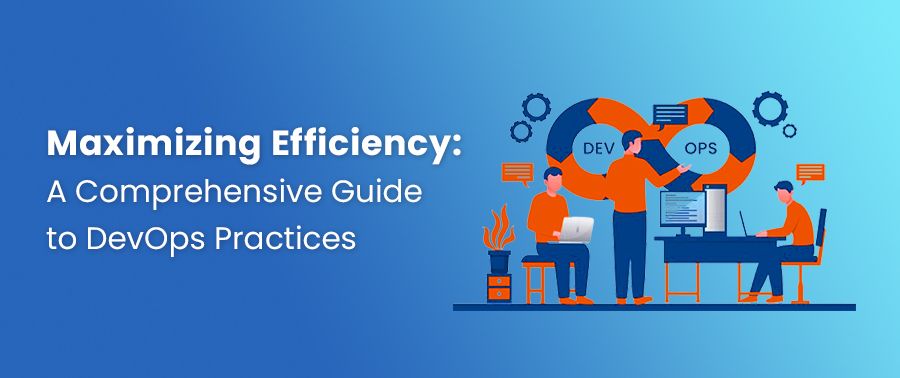
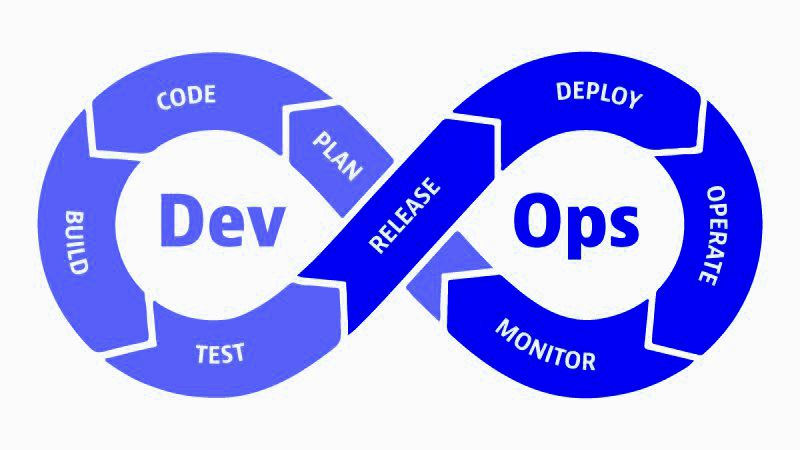
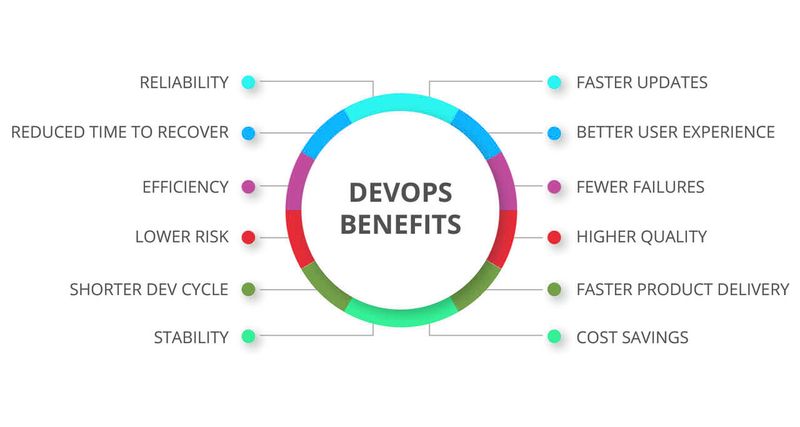
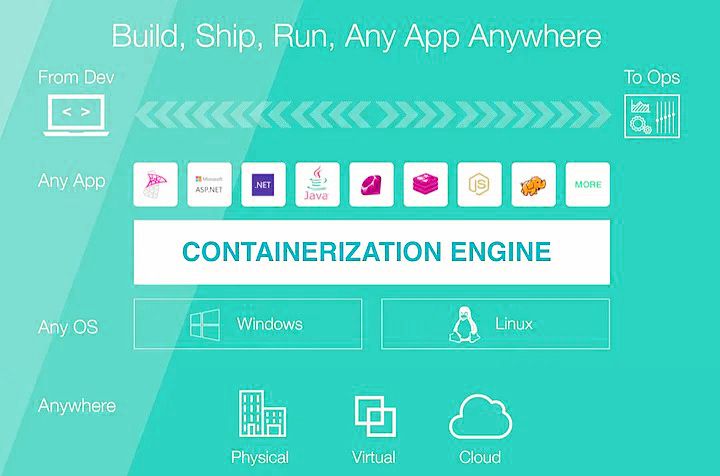
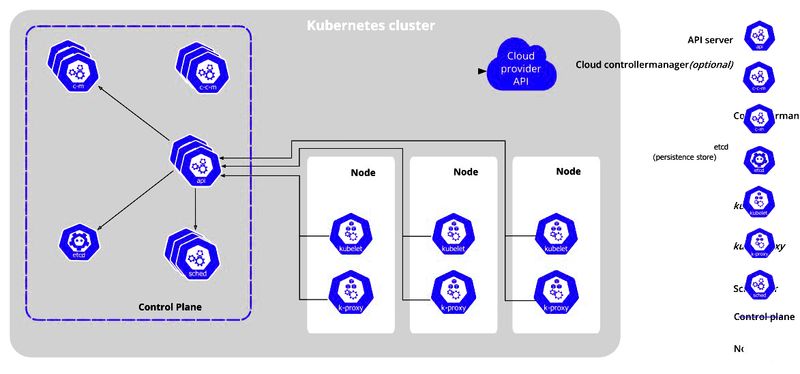




Top comments (1)
very informative